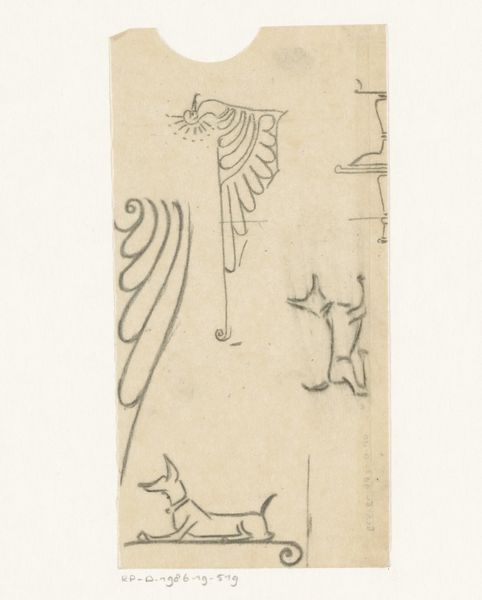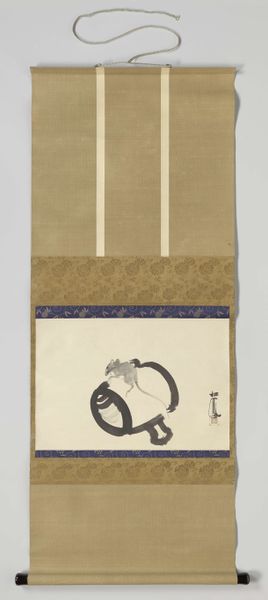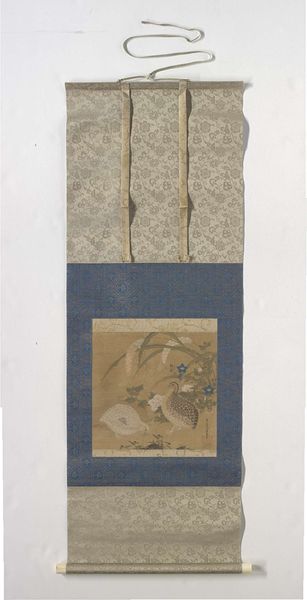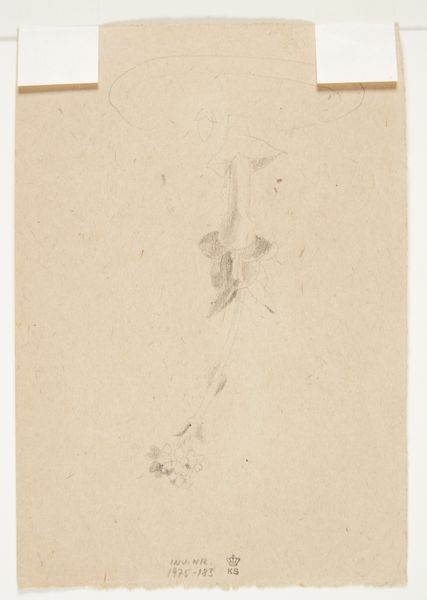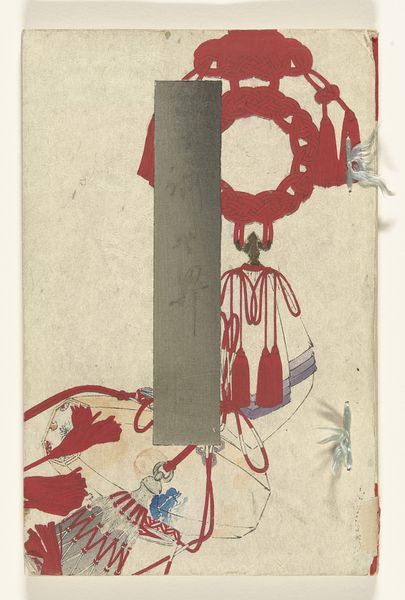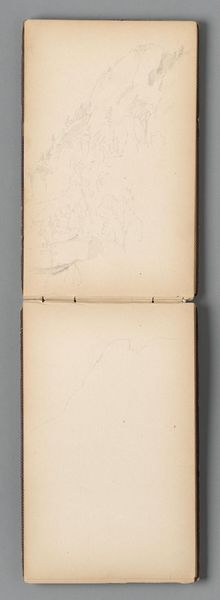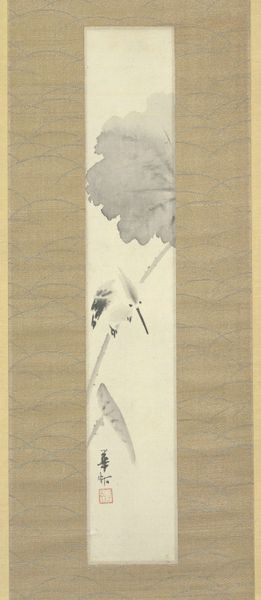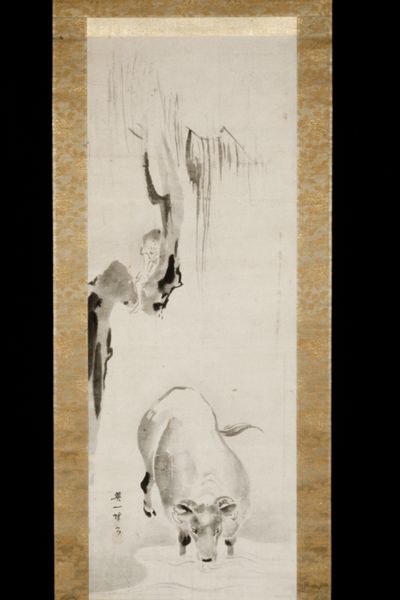
painting, watercolor, ink
#
painting
#
asian-art
#
ukiyo-e
#
figuration
#
watercolor
#
ink
#
orientalism
#
line
Dimensions: height 112 cm, width 30.5 cm, height 200 cm, width 43.5 cm, height 7.5 cm, width 53 cm, depth 8 cm
Copyright: Rijks Museum: Open Domain
This is a hanging scroll with ink and color on silk, featuring a lotus root and a rat, by Shibata Zeshin, who lived in Japan during the 19th century. Zeshin was trained in both traditional painting and lacquer techniques, and he often combined the two in his work. The juxtaposition of the lotus root and rat is not accidental, each carries symbolic weight: the lotus is a symbol of purity and enlightenment in Buddhism, while the rat is a symbol of resourcefulness and adaptability in Japanese folklore. Together, they represent a complex interplay of cultural values and beliefs. Zeshin lived through the end of the Edo period and into the Meiji Restoration, a time of immense social and political change in Japan. As Japan opened its borders to the West, many traditional art forms were threatened. Zeshin sought to preserve and innovate traditional Japanese art forms, such as lacquer painting, which was seen as being under threat from Western influences. Zeshin's work invites us to reflect on the values and beliefs we hold dear, and how they shape our understanding of the world around us. In times of social change, the emotional resonance of art becomes an anchor, providing a sense of continuity and connection to our cultural heritage.
Comments
rijksmuseum over 2 years ago
⋮
Shibata Zeshin was a successful lacquerer and print designer, as well as a painter. Here he created a simple, yet refined composition, with the tiny figure of the rat on the large lotus root. The animal’s fur is rendered with subtle brushwork, which like the colours and texture of the lotus root, was applied while the paper was still wet.
Join the conversation
Join millions of artists and users on Artera today and experience the ultimate creative platform.

